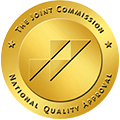 Eye Movement Desensitization and Reprocessing (EMDR) became the preferred treatment approach for people suffering from PTSD trauma and single incident trauma (car accidents, rape, etc.) from the very beginning due to the positive research that was conducted and the evidence that it made a difference in the lives of the people who participated in this treatment. It was proven to reduce a person’s strong emotional reactions to their past trauma in a relatively short period of time, sometimes as few as 1 – 5 sessions for any one single incident. Since this model of treatment is so effective with single incident trauma and PTSD it has been applied to other populations of clients which are helped with EMDR therapy as well. In Jim Knipes book, EMDR Toolbox: Theory and Treatment of Complex PTSD and Dissociation, he states this “emotional disturbance and behavior problems in the present often have their origins in prior events that were not life-threatening, but were very damaging. This is true not only for children who have had active exposure to adverse events (“trauma of commission”) but also for children who had “traumas of omission” – failure to receive adequate nurturing, mirroring, engagement, or guidance during childhood” (Knipe, 2015, p. 5).
Eye Movement Desensitization and Reprocessing (EMDR) became the preferred treatment approach for people suffering from PTSD trauma and single incident trauma (car accidents, rape, etc.) from the very beginning due to the positive research that was conducted and the evidence that it made a difference in the lives of the people who participated in this treatment. It was proven to reduce a person’s strong emotional reactions to their past trauma in a relatively short period of time, sometimes as few as 1 – 5 sessions for any one single incident. Since this model of treatment is so effective with single incident trauma and PTSD it has been applied to other populations of clients which are helped with EMDR therapy as well. In Jim Knipes book, EMDR Toolbox: Theory and Treatment of Complex PTSD and Dissociation, he states this “emotional disturbance and behavior problems in the present often have their origins in prior events that were not life-threatening, but were very damaging. This is true not only for children who have had active exposure to adverse events (“trauma of commission”) but also for children who had “traumas of omission” – failure to receive adequate nurturing, mirroring, engagement, or guidance during childhood” (Knipe, 2015, p. 5).
The most important aspect of the above quote is that clients who come to Canyon Crossing for addiction treatment may also be suffering from past trauma, and may not be aware of how their present is being effected by their past. This is the one major plus in applying EMDR to an addict’s/alcoholic’s treatment. With EMDR, we can effectively separate their emotional responses to their past from their present circumstances, which make it easier to deal with their addiction and enter into a recovery that feels positive. For instance, when a person gets clean/sober and is encouraged to trust their peers and staff members, many times there is a strong resistance to trust and the client doesn’t always know why. Often times it comes from a past experience where they were hurt, disappointed, or in danger because they trusted someone (who was untrustworthy) and they don’t want to risk getting hurt again. With EMDR we can process and resolve these past incidents in order to help the client with the healing process and help them to trust the program and the staff. EMDR works well within a whole treatment approach that includes 12 step meetings, structured living, peer groups, and talk therapy. I’m pleased to be a part of this team and to bring EMDR to this population.


